10 Mysterious Snakes That Only Hunt Under The Cover Of Night
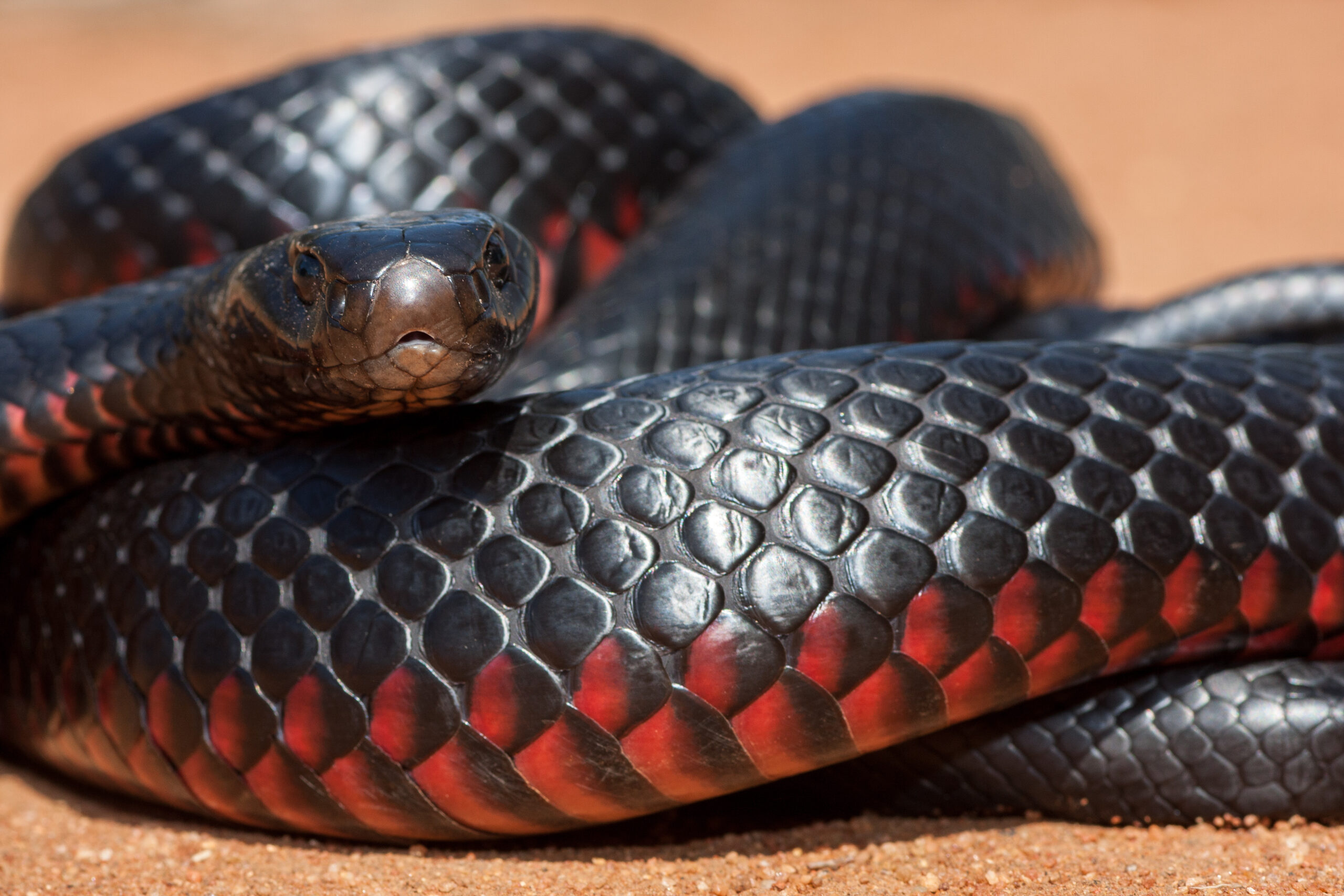
When twilight descends and the moon begins its watchful journey across the sky, certain creatures emerge from their hidden retreats, ready to embark on their nightly adventures. Among these stealthy nocturnal hunters are snakes, masters of the art of night-time hunting.
With their keen senses and silent movements, they glide through shadows, each with its own unique strategy for capturing prey. Prepare to be intrigued by the secrets of these fascinating snakes that embrace the darkness for their hunting prowess.
1. Eastern Coral Snake
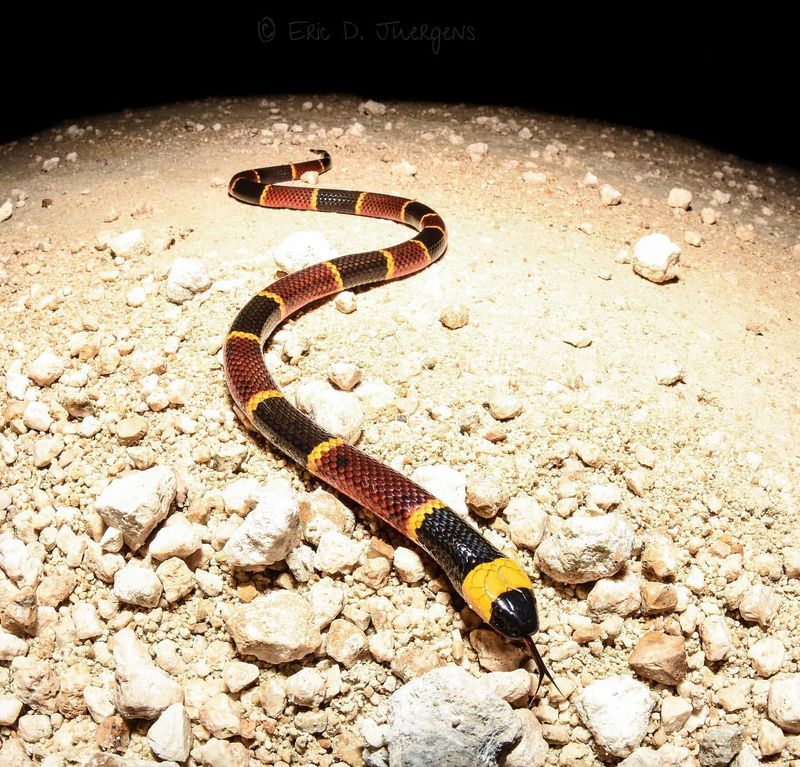
The Eastern Coral Snake is a sight to behold with its striking red, yellow, and black bands. But don’t let its beauty fool you; this serpent is a nocturnal predator with a venomous bite. As night falls, it becomes active, using its keen sense of smell and heat-sensing pits to locate prey.
This snake’s diet is quite particular, mainly consisting of other reptiles. You could say it’s a snake with a taste for its kindred. It silently slithers through the underbrush, its vibrant colors masked by shadows as it stalks its prey. It’s a reminder that beauty often comes with a bite.
Despite its venomous nature, the Eastern Coral Snake is reclusive and prefers to avoid humans. Its secretive habits make encounters rare, adding to its mysterious allure. If you’re wandering through its habitat at night, remember to tread carefully and admire from a distance.
2. Red-bellied Black Snake
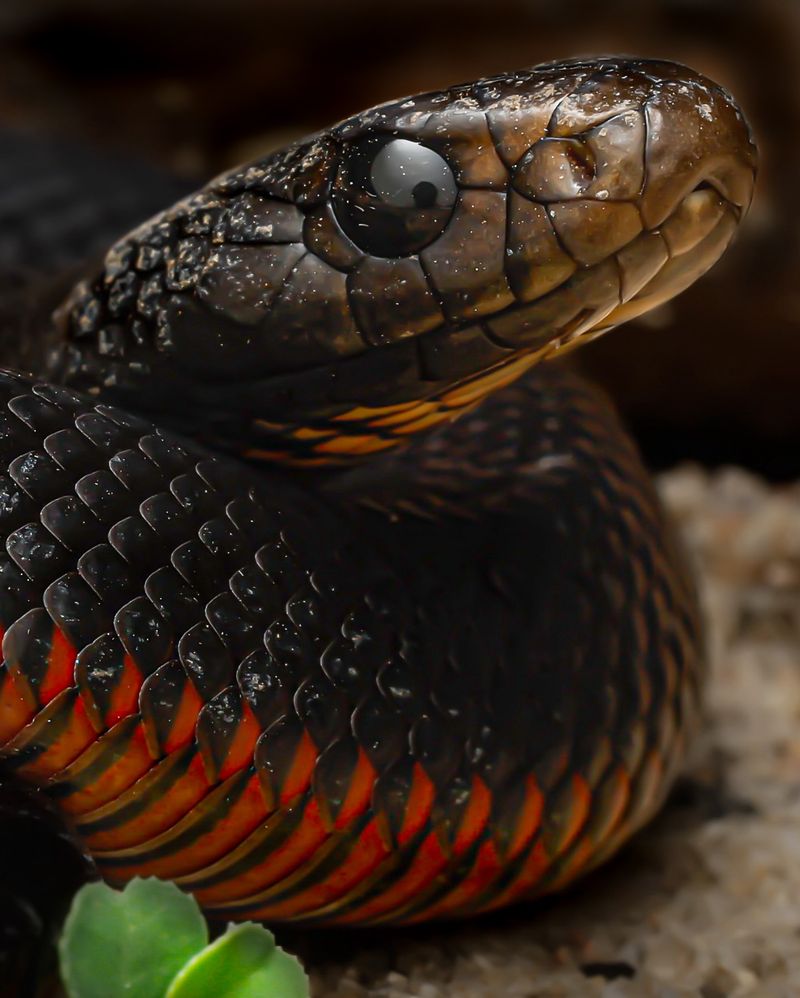
In the wetlands of Australia, the Red-bellied Black Snake prowls with an elegance only nature can bestow. This snake, with its glossy black body and distinctive red belly, cuts a striking figure against the backdrop of the night.
While its name suggests danger, it’s relatively shy, reserving its venomous bite for hunting rather than conflict. As nocturnal hunters, they employ a strategy of patience, waiting in ambush for frogs and small mammals to wander too close.
Their presence in the ecosystem is vital, controlling the populations of their prey. Despite their fearsome reputation, these snakes play a delicate role in maintaining balance in their habitat. It’s a reminder that even the most fearsome creatures have their place under the stars.
3. Banded Krait
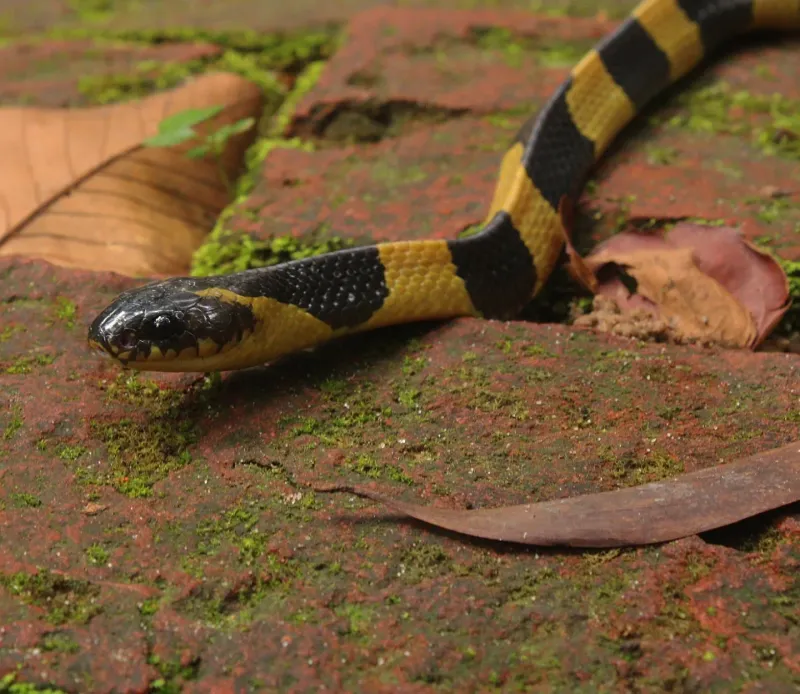
The Banded Krait is a snake with a penchant for mystery, wrapped in bold black and yellow bands. Known for their nocturnal habits, these snakes are active hunters once the sun sets, gliding through the dense foliage of Asian jungles.
Primarily feeding on other snakes, the Banded Krait is a hunter that doesn’t discriminate, often taking down venomous species with ease. It uses its highly developed sense of smell to track down its prey, proving that the night is no hindrance to its predatory prowess.
While potentially dangerous to humans, Banded Kraits are typically non-aggressive and prefer to retreat when approached. This enigmatic serpent remains a symbol of the power and elegance of nature’s design, moving silently under the cover of darkness.
4. Mangrove Snake
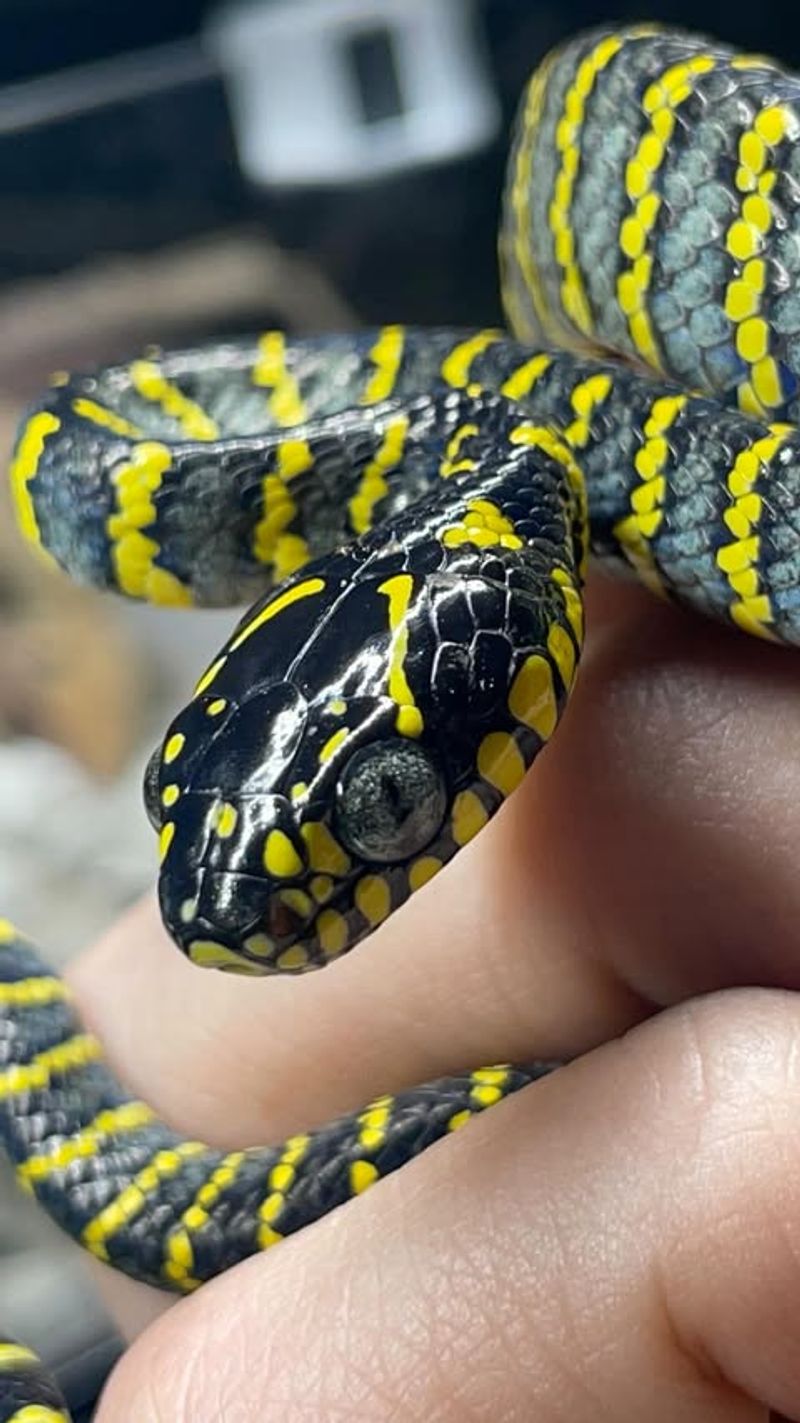
The Mangrove Snake is a creature of contrast, with neon-yellow bands starkly standing out against its black scales. Living in the mangrove swamps of Southeast Asia, this snake has adapted to a life both in water and on land.
When the night descends, the Mangrove Snake becomes a shadow in motion, expertly navigating the twisted labyrinth of roots and branches. Its prey includes small birds and mammals, which it tracks with unerring precision.
This snake’s semi-aquatic nature makes it a versatile hunter, equally at home slithering through the water or climbing trees. With its vibrant appearance, it serves as a reminder of the diversity and adaptability of life in nocturnal realms.
5. Timber Rattlesnake
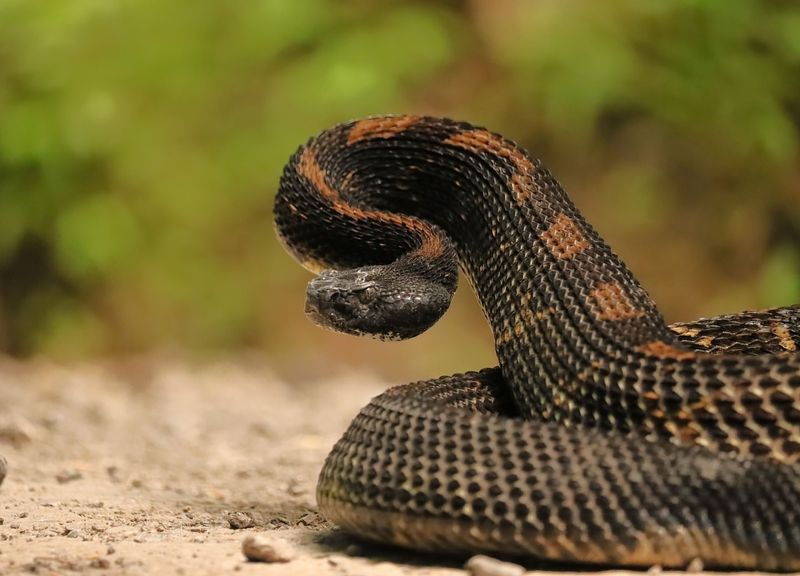
The Timber Rattlesnake, known for its distinctive rattle, is a silent predator of the night, often found in forests across the Eastern United States. With a coloration that blends seamlessly with leaf litter, it is a master of camouflage.
As darkness falls, this snake uses its heat-sensing pits to detect warm-blooded prey, such as mice and birds. It remains still until the perfect moment, then strikes with precision and speed.
Despite their intimidating appearance, Timber Rattlesnakes are generally non-aggressive, preferring to warn intruders with their rattle rather than attack. They are a testament to the balance between stealth and warning in the animal kingdom.
6. King Cobra
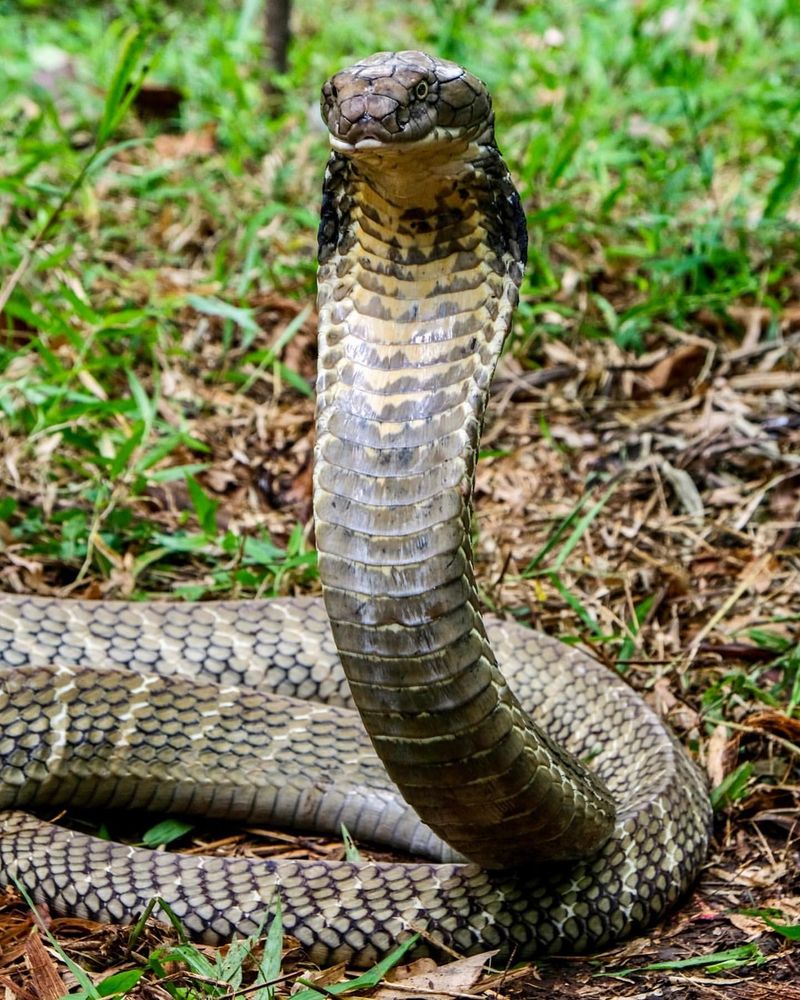
The King Cobra, an apex predator, rules the night with unmatched grace and power. As the world’s longest venomous snake, it commands respect wherever it slithers. Found in the forests of India and Southeast Asia, it is a nocturnal hunter with a regal demeanor.
This snake preys primarily on other snakes, using its acute vision and sense of smell to locate its quarry.
The King Cobra is notorious for its intelligence and ability to adapt its hunting strategies to changing circumstances. Despite its fearsome reputation, the King Cobra is often more curious than aggressive, preferring to avoid conflict when possible. It stands as a symbol of power and caution, a true monarch of the night.
7. Bushmaster
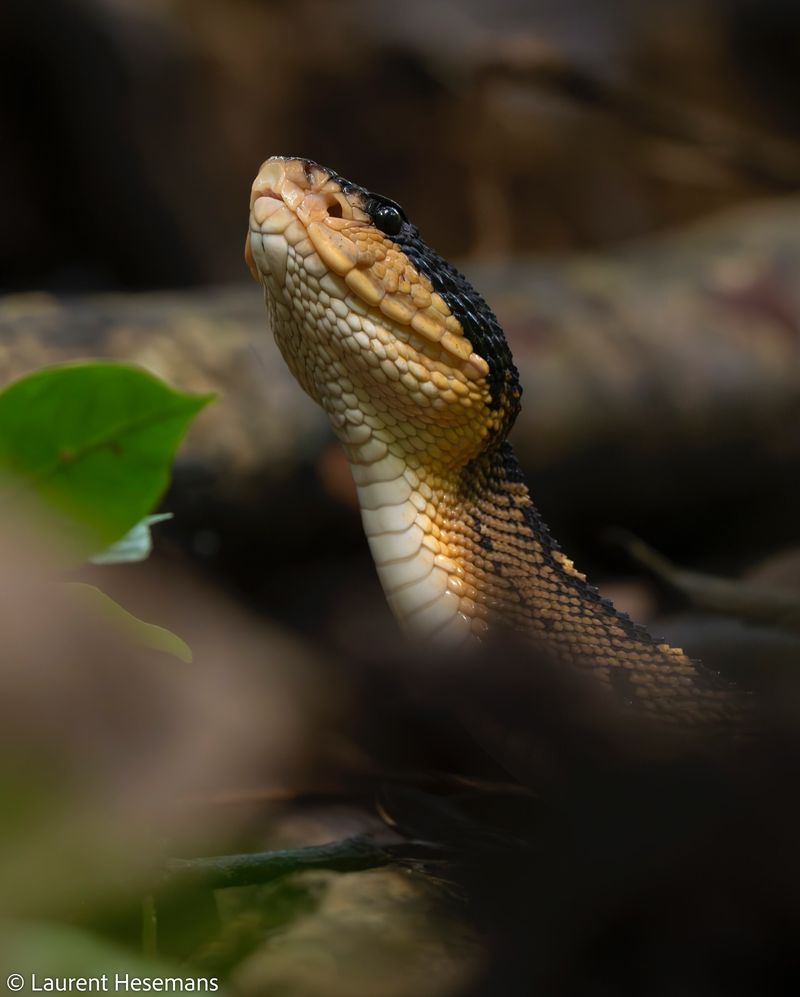
The Bushmaster is a formidable presence in the Amazon rainforest, known for its size and potent venom. As the largest pit viper, it’s a snake that commands both fear and fascination.
Primarily nocturnal, the Bushmaster hunts small mammals with a combination of patience and stealth. Its heat-sensing pits allow it to track prey in the pitch-black jungle nights, striking with deadly precision.
Despite its lethal capabilities, the Bushmaster is elusive and rarely seen by humans. Its preference for solitude adds to the mystique surrounding this giant of the snake world. It’s a reminder of the wild mysteries that still lurk in the shadows of the night.
8. Gaboon Viper
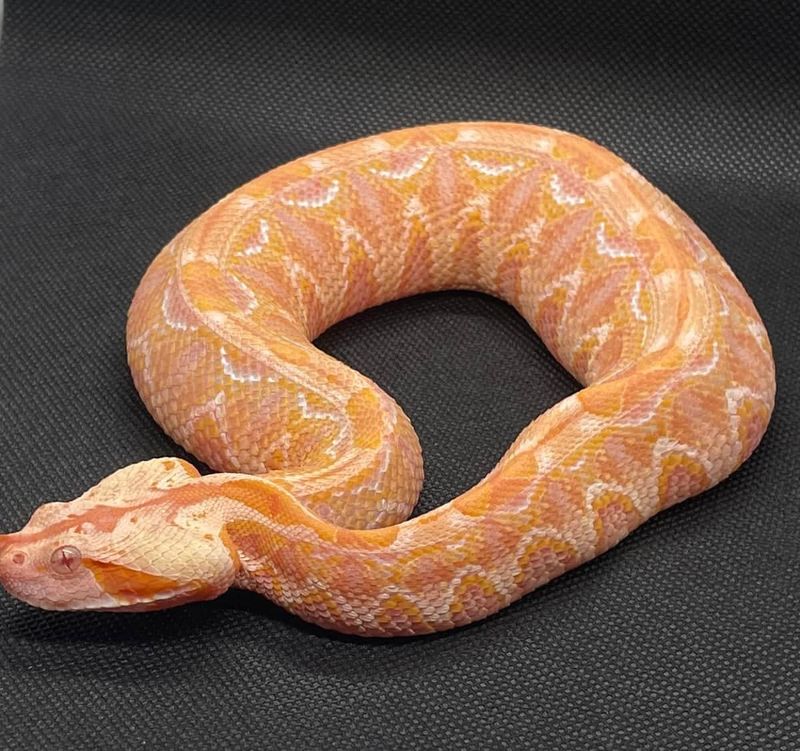
The Gaboon Viper is a master of disguise, with a pattern that mimics the forest floor. Found in the rainforests and savannas of Africa, this snake is a patient hunter that relies on ambush tactics.
Equipped with the longest fangs of any snake, the Gaboon Viper delivers a potent dose of venom to incapacitate its prey swiftly. Its diet includes rodents and birds, which it captures with lightning-fast strikes.
Despite its fearsome arsenal, the Gaboon Viper is calm and unlikely to strike unless provoked. Its presence is a testament to the diverse strategies employed by nocturnal hunters in the animal kingdom.
9. Cuban Boa
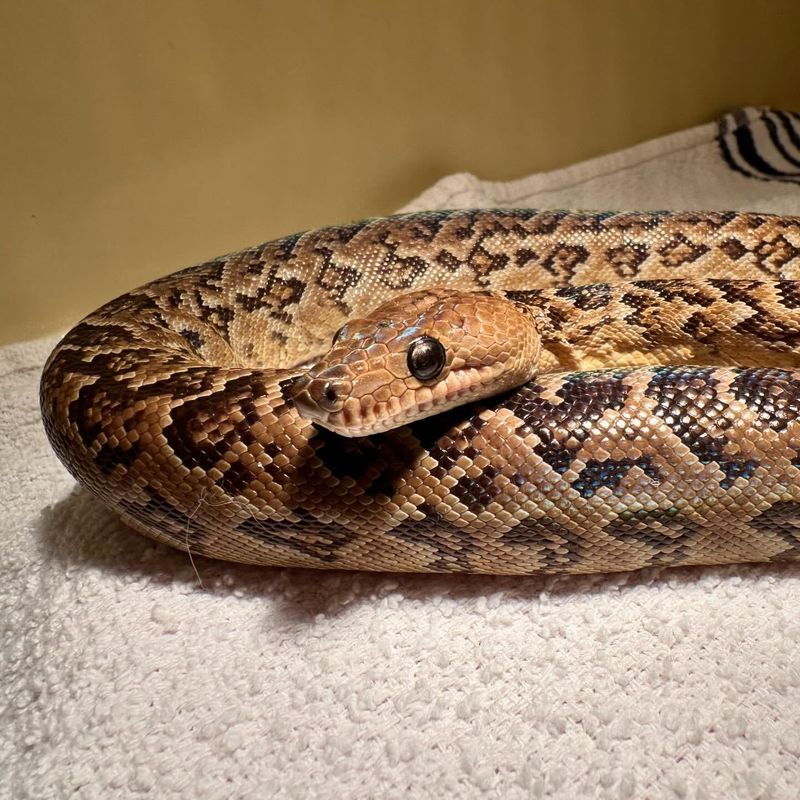
The Cuban Boa is a serpent of intrigue, its iridescent scales shimmering in the moonlight as it hunts in the forests of Cuba. This boa has an affinity for the night, where it uses its impressive size to its advantage.
Unlike many other snakes, the Cuban Boa is a constrictor, wrapping around its prey to subdue it. Its diet primarily consists of mammals and birds, which it ambushes from the trees.
This snake’s nocturnal habits and unique hunting method make it a fascinating subject of study. It embodies the allure and mystery of creatures that thrive when the rest of the world sleeps.
10. Taiwan Habu
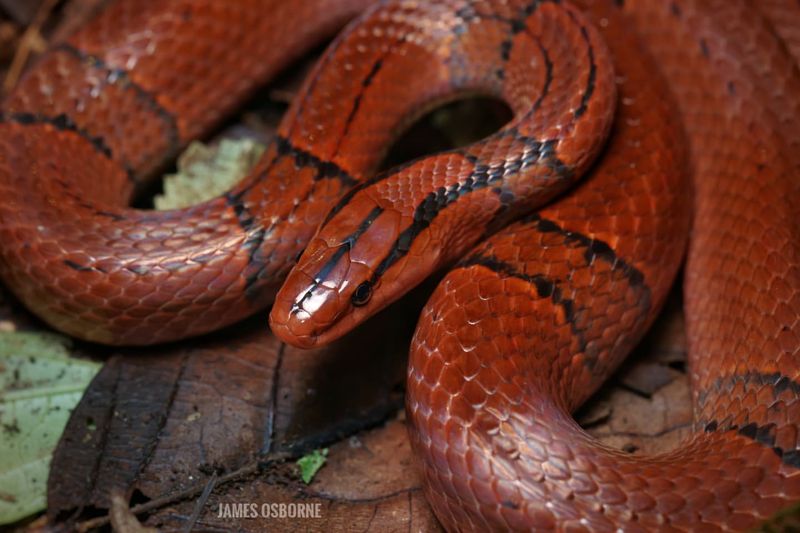
The Taiwan Habu is a snake of the mountains, found in the rugged terrains of Taiwan. Its nocturnal lifestyle sees it prowling these heights under the cover of darkness. This pit viper is equipped with heat-sensing capabilities that allow it to detect warm-blooded prey in the cool night air.
Its elusive nature and agility make it a formidable hunter in its rocky habitat. Despite its somewhat menacing appearance, the Taiwan Habu is more interested in hunting than confrontation. It represents the resilience and adaptability of snakes that have carved out a niche in challenging environments.
